What Causes Yellow Tomato Leaves |
There are several possible reasons why leaves on tomato plants are turning yellow, and getting to the right answer requires careful consideration and sometimes a bit of trial and error. Read on to learn what you can do about those yellow tomato leaves, and remember that a few yellow leaves on tomato plants is often nothing to worry about.
Why Tomato Plant Leaves Turn Yellow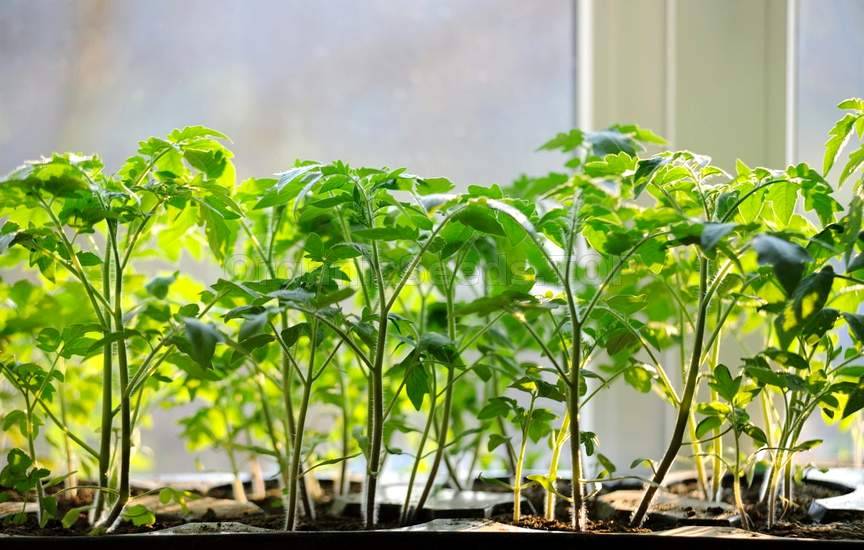 There are a number of reasons why tomato plants leaves turn yellow, most of which are easily rectified. Below are the most common causes for yellowing tomato leaves and what you can do about the issue. Fungal Diseases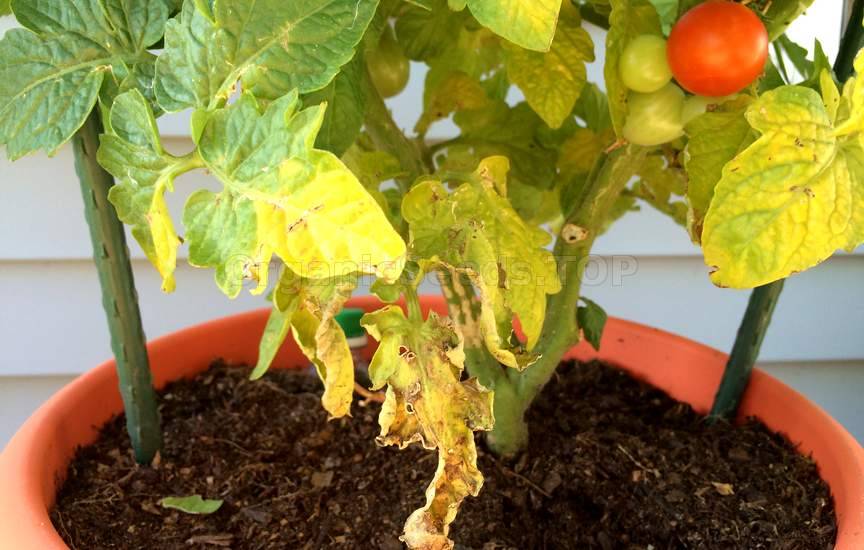 Fungal diseases are a common reason for yellow leaves on tomato. For example, early blight is evidenced by yellow leaves and small spots or lesions that grow larger, eventually taking on a bulls-eye appearance. Fruit is usually unaffected unless the disease is severe. Late blight, on the other hand, is a more troublesome disease that starts on the upper leaves. You can recognize late blight by the large, oily-looking lesions on both leaves and stems. 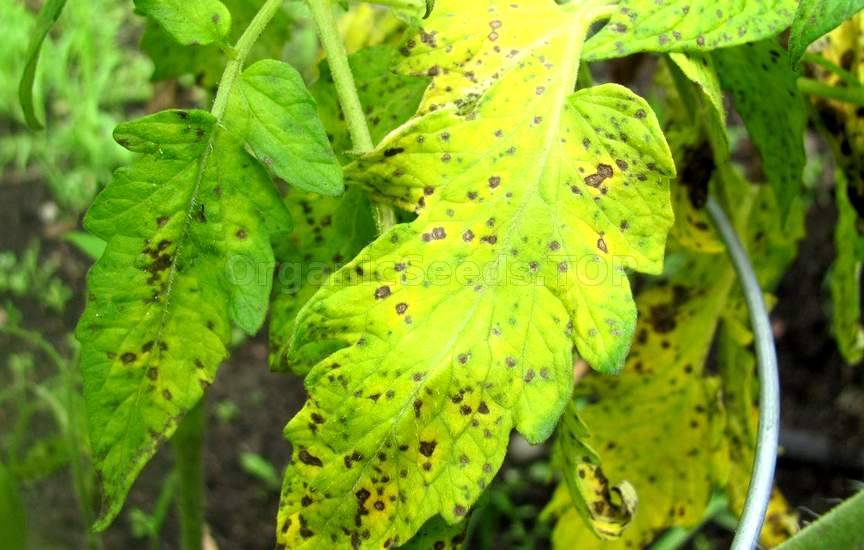 Fusarium wilt, which usually shows up on warm weather, typically causes yellow tomato leaves on one side of the plant, often beginning with the older, bottom leaves. Growth is stunted and the plant likely won’t produce fruit. These and other fungal diseases can be treated with a fungicide containing chlorothalonil. Water properly. Allow space between plants to provide ample air circulation, and prune thick growth, if necessary. Viral Diseases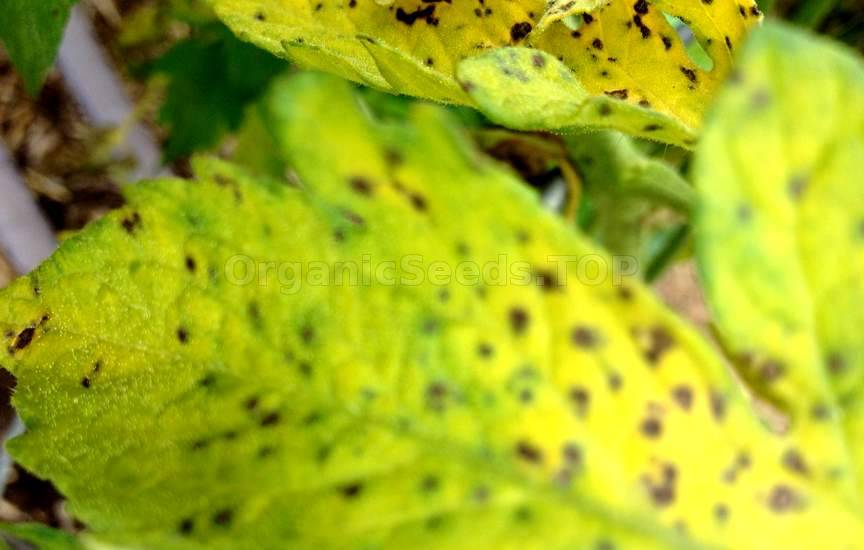 A number of viral diseases may be to blame for tomato leaves turning yellow, including tomato mosaic virus, tobacco mosaic virus, single streak virus, cucumber mosaic virus and tomato yellow leaf curl. Although symptoms vary, tomato viruses are generally recognized by stunted growth and a mosaic pattern on the leaves. Some types may cause malformations such as fernleaf, broccoli-like growth, brown streaks or severe curling. Viral diseases are often spread by pests such as whitefly, thrips or aphids, and are also transmitted by tools or hands.  Viral diseases are devastating and plants may not survive. Unfortunately, there are no chemical controls. Often, the best recourse is to discard the infected tomato plant and start over by planting disease-resistant varieties in a new section of your garden. Water properly and maintain proper pest control. Pests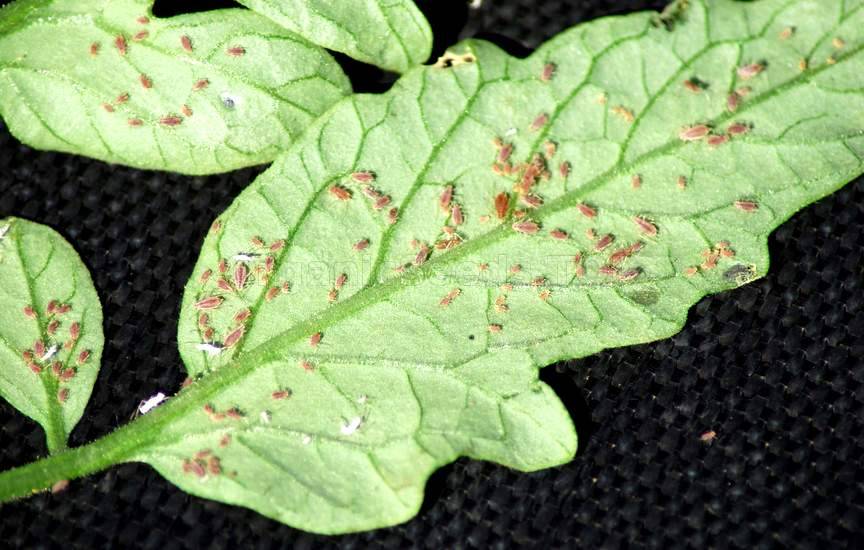 A number of pests can wreak havoc on plants, frequently causing yellow tomato leaves. Insecticidal soap or horticultural oil are good for treating smaller pests such as:
Larger tomato pests like hornworms and cutworms can be picked off by hand, or controlled with applications of Bt (Bacillus thuringiensis). Watering Problems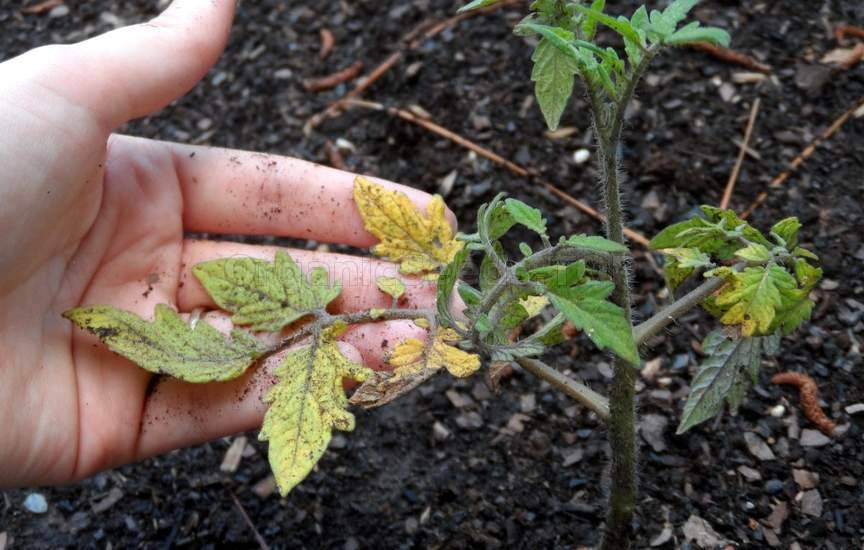 Too much or too little water can cause yellow tomato leaves. Soak tomatoes thoroughly once every five to seven days, depending on weather and soil type. Let the soil dry between watering and never allow the soil to remain soggy. Water tomato plants carefully at the base of the plant and keep the leaves as dry as possible. Watering early in the day is best. Nutritional Deficiencies If you only see a few yellow tomato leaves toward the bottom of the plant, you usually have nothing to worry about. This normally means these leaves aren’t getting the nutrients they need from the soil or they aren’t getting enough sunshine. Most often this occurs on older plants that are bearing fruit. 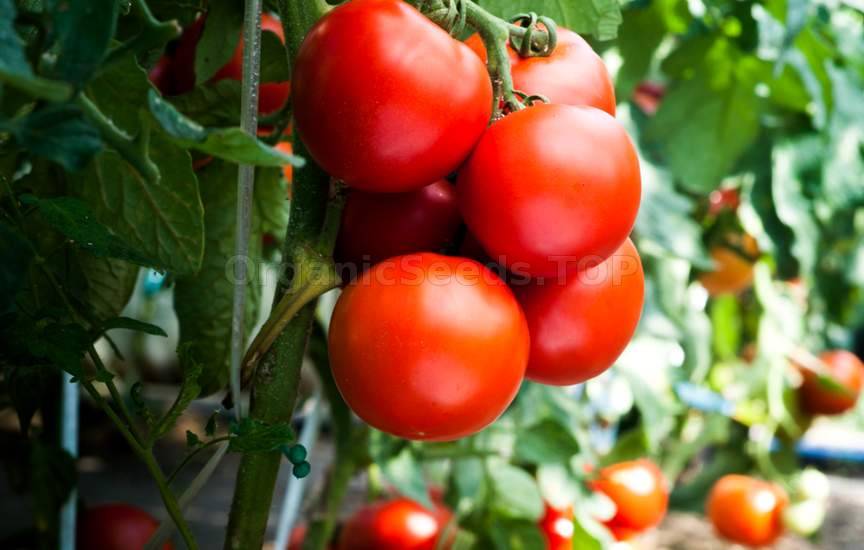 It could be something as simple as a lack of nitrogen in your soil. If this is the case, check the nitrogen level by taking a soil test to determine exactly what, if any, nutrients are lacking so you can treat accordingly. Feed tomatoes at planting time and monthly throughout the season, as tomatoes have hearty appetites. Follow the directions carefully and beware of overfeeding, which can cause lush plants at the expense of fruit. You may need:Heirloom tomatoesOrganic tomato «Helsing Junction Blues»Organic tomato «Indigo Blue Berries»Organic tomato «Ildi»«P-20 + Beauty King» - Organic Tomato Seeds |
|
|
